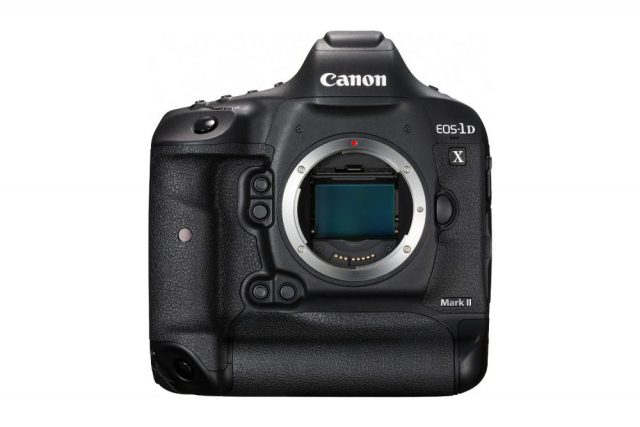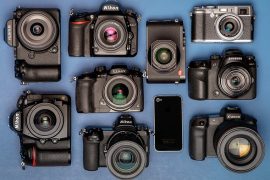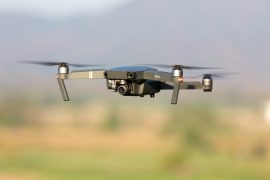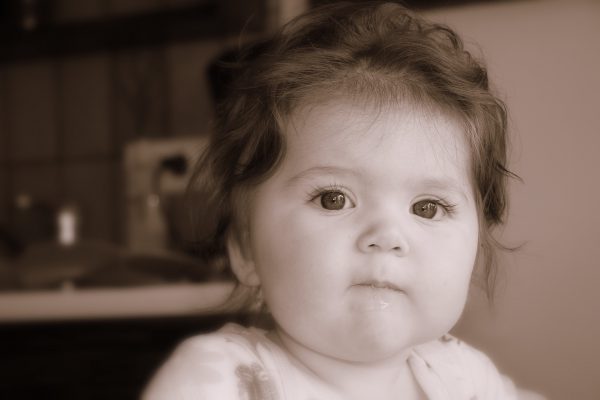Welcome to our exploration of the exciting world of portrait photography lenses! If you’ve ever wondered about the best lens to use for capturing stunning portraits, you’re in the right place. We’ll delve into the fascinating realm of 35mm, 50mm, and 85mm lenses, comparing their strengths and weaknesses to help you make an informed choice. Whether you’re a beginner or a seasoned pro, understanding these lens options can elevate your portrait game to a whole new level.
Importance of lens choice in portrait photography
The selection of a lens plays a pivotal role in the realm of portrait photography. It goes beyond simply attaching any lens and capturing an image; it involves choosing the appropriate tool for the task at hand.
The utilization of different lenses can completely transform the appearance and ambiance of your portraits. They have the power to influence the depth of field, perspective, and overall rendering of your subject.
A well-suited lens can assist in achieving that exquisite, velvety background blur, commonly referred to as bokeh, or in maintaining sharpness in the subject’s eyes.
It is the lens that adds that touch of enchantment, which is why we are examining the 35mm, 50mm, and 85mm lenses – three widely favored options for portrait photography.

Photo by Sony
Understanding Portrait Lenses
1- Explanation of what portrait lenses are
Portrait lenses are often overlooked in photography, yet they play a crucial role in capturing the true essence of individuals in their best light. These specialized camera lenses are designed to produce visually appealing and flattering portraits, bringing your subjects to life and making them stand out with exceptional clarity against a beautifully blurred background.
The secret to their success lies in their ability to create a shallow depth of field, which emphasizes your subject while producing a pleasing background blur, also known as bokeh. This separation between your subject and the background draws the viewer’s attention to the main focal point of your portrait, highlighting the person or subject in a captivating way.
2. Key factors that make a lens suitable for portraits
Now, let’s explore the key factors that make a lens suitable for portrait photography. These factors are essential to consider when choosing between lenses like 35mm, 50mm, and 85mm.
-
Focal Length:
The focal length of a lens greatly impacts the perspective and composition of your portraits. Shorter focal lengths, like 35mm, capture a wider field of view, making them great for environmental portraits or group shots. On the other hand, longer focal lengths, such as 85mm, compress the scene and create flattering, distortion-free portraits.

-
Wide Aperture:
A wide maximum aperture is a defining feature of portrait lenses. Lenses with apertures like f/1.8 or f/1.4 allow for more light to enter the camera, making them perfect for low-light conditions and creating that beautiful background blur. A wider aperture also enables you to capture sharp subjects with creamy, dreamy backgrounds
-
Sharpness:
Portrait lenses need to be sharp to capture fine details and produce high-quality images. Whether you’re shooting headshots or full-body portraits, a sharp lens ensures that your subject’s features are well-defined.
-
Bokeh Quality:
The quality of the background blur, or bokeh, is crucial. Portrait lenses with more aperture blades tend to create smoother and rounder bokeh, enhancing the overall aesthetic of your images.
-
Autofocus Speed:
In portrait photography, quick and accurate autofocus is essential, especially when capturing moving subjects. A lens with a responsive autofocus system can help you nail that perfect shot.
-
Image stabilization: Image stabilization
is a feature that helps to reduce camera shake, which can be a problem when shooting handheld in low light or at slow shutter speeds. Image stabilization is especially important for portrait photography, as you will often be shooting at slower shutter speeds to create a shallow depth of field.
Additional factors to consider
In addition to the key factors listed above, there are a few other things to consider when choosing a lens for portrait photography:
- Weather sealing: If you plan on shooting outdoors in all types of weather, you will want to choose a lens that is weather-sealed. This will help to protect the lens from dust, moisture, and other elements.
- Lens coatings: Lens coatings can help to reduce flare and improve image quality. Some lenses have better coatings than others, so it is important to read reviews before you buy.
- Filter compatibility: If you plan on using filters, such as a polarizing filter or neutral density filter, you will want to choose a lens that is compatible with the filters you want to use.

Photo by Helena Lopes
Brief overview of the 35mm, 50mm, and 85mm lenses
Now that we’ve covered the fundamentals, let’s take a closer look at the 35mm, 50mm, and 85mm lenses and see how they stack up in terms of these key factors.
-
35mm lens
The 35mm lens is a wide-angle lens that is great for capturing group photos and environmental portraits. It has a field of view of 63°, and it also has a relatively shallow depth of field, which can be used to create stunning bokeh effects. However, it’s important to note that the 35mm lens can distort the subject’s features, especially when used up close.
- 50mm lens
The 50mm lens is a standard lens that has a natural field of view similar to the human eye. It has a field of view of 46°. It is a versatile lens that can be used for a variety of subjects, including portraits, street photography, and travel photography. The 50mm lens is also relatively affordable, making it a great option for beginner photographers.
- 85mm lens
The 85mm lens is a short telephoto lens that is ideal for portrait photography. It has a field of view of 28°. This narrow field of view helps to compress the background and focus attention on the subject. The 85mm lens also has a very shallow depth of field, which can be used to create beautiful bokeh effects. However, it’s important to note that the 85mm lens can be more expensive than the 35mm and 50mm lenses, and it can be more difficult to use in tight spaces.

Photo by Sony
Portrait Photography Lenses: 35mm vs 50mm vs 85mm Compared
I. 35mm Lens for Portraits
1- Detailed description of the 35mm lens
A 35mm lens is a wide-angle lens with a moderate focal length. It has a wide field of view, which means that it can capture a lot of the scene in front of it. This makes it a great lens for capturing environmental portraits, which are portraits that include the subject’s surroundings. It also excels when capturing Group Shot
35mm lenses are also known for their ability to create a sense of depth in images. This is because they can compress the background, making it appear closer to the subject. This effect can be used to make the subject stand out and create a more dramatic portrait.
2. Effect on Facial Features:
Because a 35mm lens is a wide-angle lens, with a focal length that is shorter than the human eye’s field of view. This wider perspective can lead to perspective distortion.
- Nose: A 35mm lens can make the nose appear larger and more prominent, especially when shooting from a close distance.
- Eyes: may appear slightly larger towards the edges of the frame, adding a touch of drama.
- Mouth: The wider angle may accentuate the mouth, capturing a broader range of expressions.
- Forehead: The forehead may appear elongated and larger in proportion to the rest of the face.
- Facial Features: Facial features may appear slightly exaggerated and distorted, especially when shooting from a close-up angle.
3. Advantages and disadvantages of using a 35mm lens for portraits
Advantages:
- Versatility: A 35mm lens can be used for a variety of portrait photography styles, including environmental portraits, headshots, and full-body portraits.
- Wide field of view: The wide field of view allows you to capture more of the scene around the subject, which can add context to the portrait.
- Shallow depth of field: A 35mm lens can create a shallow depth of field, which can blur the background and make the subject stand out.
- Low-Light Performance: The wide aperture also enhances the lens’s performance in low-light conditions. Whether you’re shooting indoors or during the golden hour, the 35mm lens delivers impressive results.
- Affordable: 35mm lenses are relatively affordable compared to other portrait lenses.
Disadvantages:
- Distortion: One potential drawback of the 35mm lens is the slight distortion it may introduce, especially when shooting up close. This distortion can affect the proportions of your subject, but it’s often minimal and manageable.
- Limited Background Blur: While the 35mm lens can create a pleasing background blur, it may not be as pronounced as with longer lenses. If achieving maximum bokeh is your priority, you might explore other focal lengths.
- Not ideal for tight spaces: The wide field of view can be challenging to use in tight spaces.
4. When to Use the 35mm Lens & Sample Photos
- Environmental Portraits: Capture subjects within their surroundings, telling a broader story.
- Group Shots: Fit multiple subjects comfortably into the frame, maintaining clarity and detail.
- Storytelling Photography: Document events and candid moments with a wide-angle perspective.

Photo by Rully Kustiwa

Photo by Ron Lach

Photo by Depositphotos
5. Popular 35mm lenses

II- 50mm Lens for Portraits
1. Detailed description of the 50mm lens
A 50mm lens is considered a standard lens because its focal length closely approximates the human eye’s field of view. This means that when you look through a 50mm lens, the scene appears very similar to how you would see it with your naked eye. This natural perspective makes 50mm lenses ideal for capturing portraits that feel real and authentic.
In addition to their natural perspective, 50mm lenses also have a shallow depth of field, which means that the background is blurred out while the subject remains in sharp focus. This effect is particularly flattering for portraits because it helps to isolate the subject from the background and draw attention to their features.
Finally, 50mm lenses are relatively affordable, making them a great option for beginner photographers. There are many high-quality 50mm lenses available for under $200.
2. Effect on Facial Features:
Because the 50mm lens has a focal length that closely approximates the human eye’s field of view. This natural perspective is often considered flattering for portraiture, as it portrays the subject in a way that feels familiar and authentic.
- Overall Proportion: A 50mm lens typically renders facial features in a way that is considered more natural and proportional.
- Nose: The nose appears less distorted compared to a wider-angle lens.
- Eyes: The eyes are captured in a natural and proportionate manner, maintaining a genuine look.
- Nose: Facial proportions are maintained, presenting the nose in a balanced and realistic way.
- Facial Features: Facial features are generally rendered more accurately and realistically.
3. Advantages and disadvantages of using a 50mm lens for portraits
Advantages:
- Natural Perspective: The 50mm lens closely resembles the natural perspective of the human eye. This makes it an excellent choice for capturing scenes and portraits with a lifelike feel.
- Versatility: Like the 35mm lens, the 50mm lens is incredibly versatile. It’s suitable for a wide range of photography styles, including portraits, landscapes, and street photography.
- Wide Aperture: The wide aperture of the 50mm lens allows for stunning background blur, making your subject stand out against a dreamy, out-of-focus background.
- Low-Light Performance: With a wide maximum aperture, the 50mm lens performs exceptionally well in low-light conditions. It’s a reliable choice for shooting in dimly lit environments.
Disadvantages:
- Limited Environmental Capture: While the 50mm lens is versatile, it may not capture as much of the environment as a wider lens like the 35mm. It’s more suited for isolating subjects than showcasing surroundings.
- Distortion at Close Range: Similar to the 35mm lens, the 50mm lens may exhibit slight distortion when shooting up close. However, this distortion is generally minimal and manageable.
4. When to Use the 50mm Lens & Sample Photos
- Casual Headshots: Capture authentic and natural expressions with a balanced perspective.
- Full-body portraits: Capture the subject within a more natural perspective, showing their body language and interaction with their surroundings.
- Family Portraits: Create timeless family photos with a lens that mirrors the human eye.
- Street Photography: capture candid moments with ease.

Photo by bharat kumar

Photo by Craig McKay

Photo by MART PRODUCTION
5. Popular 50mm lenses

III. 85mm Lens for Portraits
1. Detailed description of the 85mm lens
Let’s explore the world of professional portraiture with the remarkable 85mm lens. Often hailed as the “portrait lens,” the 85mm focal length is cherished for its ability to create stunning, flattering images with a touch of magic. This short telephoto lens is a go-to choice for many portrait photographers, delivering exceptional results in terms of both image quality and artistic expression.
The 85mm lens typically features a wide maximum aperture, commonly around f/1.4 or f/1.8. This wide aperture is a defining characteristic that sets the 85mm lens apart, allowing for incredible background blur and isolating the subject from the surroundings. Whether you’re capturing headshots, close-up details, or even outdoor portraits, the 85mm lens excels in producing images with a beautiful, creamy bokeh.
2. Effect on Facial Features:
An 85mm lens is considered a telephoto lens, with a focal length that is longer than the human eye’s field of view. This longer focal length has the effect of compressing the background, making it appear closer to the subject. The 85mm lens is often used for close-up portraits, as it can create a more intimate and flattering portrayal of the subject.
- Compressed Background: The background appears closer to the subject, making the subject stand out more prominently.
- Eyes: The eyes are highlighted with exquisite detail, creating a captivating and engaging gaze.
- Nose: The compressed scene minimizes potential distortion, showcasing the nose with elegance.
- Emphasized Features: Facial features are emphasized due to the compressed background and shallow depth of field.
- Flattering Perspective: The 85mm lens can create a more flattering perspective for close-up portraits, as it can minimize the appearance of flaws and imperfections.
3. Advantages and disadvantages of using an 85mm lens for portraits
Advantages:
- Flattering Perspective: The 85mm lens offers a flattering perspective, compressing the scene and reducing any potential distortion. This makes it an ideal choice for capturing portraits with a professional and polished look.
- Striking Background Blur: One of the standout features of the 85mm lens is its ability to create a stunning background blur. This results in a dreamy, out-of-focus background that makes your subject pop and adds a touch of elegance to your portraits.
- Perfect for Headshots: The 85mm lens shines when it comes to headshots. Its focal length allows you to capture facial features with exceptional detail while maintaining a comfortable working distance between you and your subject.
- Low-Light Performance: Like the 35mm and 50mm lenses, the 85mm lens boasts a wide aperture, ensuring excellent performance in low-light conditions. This makes it a reliable choice for indoor and evening portraits.
Disadvantages:
- Limited Environmental Capture: Similar to the 50mm lens, the 85mm lens may not capture as much of the environment as a wider lens like the 35mm. It excels at isolating subjects rather than showcasing surroundings.
- Size and Weight: Some 85mm lenses can be larger and heavier compared to their 35mm and 50mm counterparts. This might be a consideration if you prefer a more lightweight and compact setup.
4. When to Use the 85mm Lens:
- Headshot Photography: Showcase facial features with exquisite detail and minimal distortion.
- Close-Up Portraits: Capture the finer details and expressions with a flattering compression.
- Professional Portraits: Achieve a polished and elegant look suitable for business profiles and professional branding.
- Recommended 50mm lenses

Photo by Sony

Image by Dusan Tesanovic from Pixabay

Photo by Omid Armin on Unsplash
5. Popular 50mm lenses

Side-by-side comparison of the 35mm, 50mm, and 85mm lenses
This table provides a quick overview of the focal lengths, perspectives, background blur, versatility, low-light performance, portraiture styles, size and weight, and cost of the 35mm, 50mm, and 85mm lenses.
| Aspect | 35mm Lens | 50mm Lens | 85mm Lens |
|---|---|---|---|
| Focal Length | Wide-angle, capturing a broader field of view | Natural perspective, closely mirroring the human eye | Short telephoto, providing a more compressed scene |
| Perspective | Expansive, ideal for environmental portraits | Balanced and versatile, suitable for various styles | Flattering, reducing potential distortion |
| Background Blur (Bokeh) | Moderate, may not be as pronounced as longer lenses | Impressive, creates a dreamy and pleasing bokeh | Striking, adds an elegant and professional touch |
| Versatility | Highly versatile, great for a range of photography | Versatile, suitable for different scenarios | Versatile, excels in portrait and close-up photography |
| Low-Light Performance | Good, with many offering wide apertures | Excellent, performs well in low-light conditions | Exceptional, wide aperture ensures top-notch results |
| Portraiture Style | Environmental, group shots, storytelling | Natural, authentic, suitable for a variety of portraits | Flattering, ideal for professional and polished looks |
| Size and Weight | Compact and lightweight | Moderate in size and weight | Can be larger and heavier, varies by lens model |
| Cost | Generally more affordable compared to longer lenses | Moderate, a good balance between cost and performance | Can be higher, especially for lenses with wider apertures |
Related posts
What Is A Good Lens For Portraits
15 Best Lenses For Portraits – A 2023 Guide
Best Canon Lenses For Portrait Photography
What Is The Best Portrait Lens For Nikon? – The Top 5!
Thanks for reading, I hope you enjoyed the article, if you have any questions just drop them below & I will be happy to answer you.
The featured photo by Alexandru Zdrobău on Unsplash
If you enjoy the site, don’t forget to subscribe, we will only inform you when a new article is posted.









This is a very informative article with comparisons among various lenses. The right lens produces the right photos for post-production.
Thanks
This is an awesome blog keep sharing!
Thanks